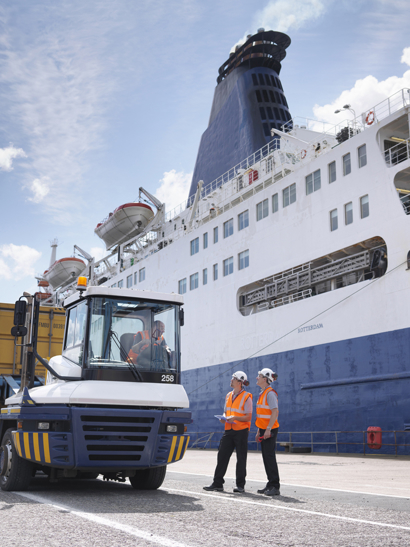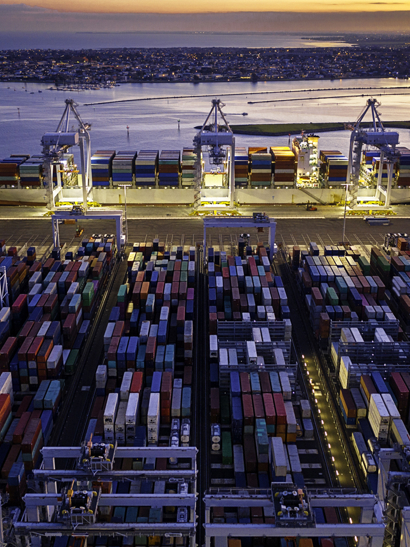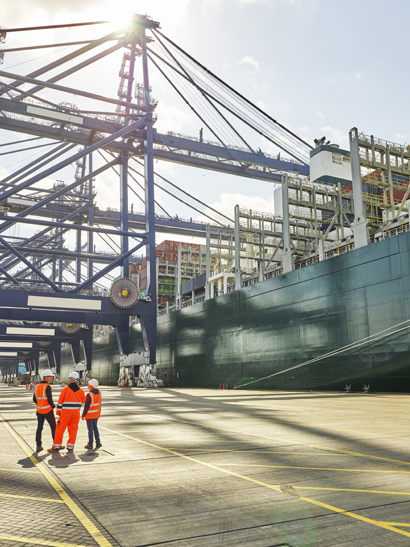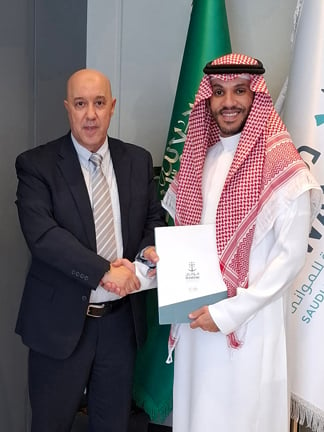LR’s new Senior Vice President – Ports Advisory, Kamran Ul Haq, has been aware of the power and influence of ports since his childhood in Karachi. Pakistan’s largest city was built to take advantage of the deep-water port and natural harbour close to the mouth of the Indus.
Karachi, an old and established port, is today a good example of a modern, intermodal port. Conveniently situated near the Strait of Hormuz and Gulf of Aden, it handles more than 60% of the country’s maritime trade, with excellent rail connections to transport containerised cargo, dry bulk and petroleum products to and from the hinterland.
Ports today face a series of interconnected challenges, many of which are driven by complex geopolitical factors and sustainability drivers. Increasing maritime traffic has led many ports to reach capacity, with many employing technological and digital solutions to manage that capacity and support port performance and profitability. Cyber security and security also remain a constant concern, which include the risks of rising sea levels.

Everything must be considered through the prism of decarbonisation, notes Kamran. For some ports, rising sea levels is an existential issue that could affect their very existence “Safeguarding against emerging threats, such as climate change, is becoming an urgent worldwide concern. Rising sea levels threaten some ports and their hinterlands. And many ports have aging infrastructure that would be unable to withstand or protect critical infrastructure against changing weather patterns or sea level rise,” he says.
Intermodal interfaces
Modern ports must start thinking about taking advantage of intermodal operations – for example using rail connections to reach hinterlands and connect ports with key internal logistics hubs, Kamran tells Horizons. “This will support decarbonisation efforts and provide greater efficiencies as we as reducing the number of trucks on the road.”
Kamran spent his professional life looking at these logistical interfaces, initially working for the Pakistan State Oil Company. He managed downstream infrastructure essential to store, process and move crude oil, gas and petroleum products from Karachi port on to the rest of the country.
He has since worked extensively across the Middle East, latterly at technical professional services company, Jacobs, where he rose to Regional Operations Director managing aviation, maritime and port infrastructure operations, in addition to coastal urban developments in the area. All while building a global ports infrastructure team.
Now, Kamran is expanding his team of industry-leading experts at LR. With backgrounds at oil majors, major companies, large vessel operators and ports as well as economists and naval architects, his team provides strategic and management consultancy, including decarbonisation and process optimisation to ports, helping to prepare them for tomorrow’s challenges.
Capacity
As trade grows in proportion to an expanding population, capacity pressures at ports will not ease. “International trade is growing because the world is ‘shrinking’, thanks to e-commerce and the use of technology. Port expansion has been exponential, with some ports already operating at more than 100% capacity,” he explains.
Ports can deliver more value by operating more efficiently and will retain customers through, “improved turnaround times, more efficient berth occupancy, and effective resource allocation.”
Although ports are static nodes in the supply chain, they can still be significantly affected by geopolitics.. “International relations and world events can re-shuffle routes, directly impacting ports,” he notes “Ships can be redirected to neighbouring ports, which may be in different countries. Supply chains must be ready for these eventualities and ports should their consider strategic advantage in any given scenario,” he states.
To mitigate risks and ensure smooth integration with the rest of the supply chain, “it’s crucial to be proactive”. New regulatory demands will further increase pressure on ports.
“Ports are major carbon emitters, and there is a lot of room for them to reduce that impact by transitioning to sustainable and decarbonised operations. LR is well placed to help them begin their energy transition journey,” he asserts.

Many ports need to consider a comprehensive evaluation of their risk mitigation strategies to support their long-term sustainability and resilience.

Efficient operation
Efficiency will only become more important in the global maritime supply chain and ports must play their part. “Many ports need to consider a comprehensive evaluation of their risk mitigation strategies to support their long-term sustainability and resilience,” asserts Kamran.
Two areas of immediate concern are:
- Port performance: to increase operational performance with targeted operational expenditure and more sophisticated port governance, through digitalisation and green initiatives.
- Port Assets: to transition to sustainable operations by updating and enhancing port assets for improved efficiency port side, and to support decarbonisation on the maritime
Portside, automation is one way to reduce operating costs while maintaining efficient governance and reliability. “Many ports need to streamline their processes and increase their attractiveness to shipping, such as by improving intermodal planning, to make operations as efficient and sustainable as possible,” Kamran tells Horizons.
This requires targeted investment, and can, “already be seen in ports around the UAE, where rail investment has displaced cargo from road to rail, which increases efficiency while reducing pollution and road congestion”, he explains.
Energy transition
The need to decarbonise and achieve net zero emissions by 2050 will not be achievable without efficient, lower emission, smart and resilient ports.
Ports must offer next-generation fuels to minimise scope 3 carbon emissions, and to help the wider maritime sector comply with regulatory guidelines to use clean energy systems.
Kamran also believes floating nuclear will be, “a game changer, by switching power away from the local grid to local clean sources”. For those ports that refine oil for fuel now, nuclear power could also be used to electrolyse seawater and manufacture clean fuels like hydrogen or ammonia.
However, regulatory and public approval will be key considerations. He’s clear that, “Local communities must be made to feel safe, which will be a very important factor when ports seize these opportunities.”
Ports have options and Kamran is certain LR’s tailored solutions will help meet these very real challenges.

Nature and people positive ports
Recent Lloyd’s Register Foundation port initiatives echo the themes of efficiency, sustainability and risk mitigation. Its work takes an ecological approach to ports’ growth strategies. “As global trade continues to evolve, the ports of tomorrow have a delicate balance to strike between advancing economic goals and safeguarding the planet’s future,” said Thomas Thune Andersen, Chairman of the Lloyd’s Register Foundation and LR Group.
In partnership with the World Economic Forum, the Foundation is working to secure commitments from major global ports and sharing verifiable strategies that benefit people and nature. In parallel, efforts will raise awareness about building new ports in emerging markets, to ensure new investments incorporate nature-positive criteria.
Alfredo Giron, Head of Ocean, World Economic Forum said, “Ports play a significant role in driving growth for emerging economies. As demand for port infrastructure increases, we need innovative practices and engineering methods to secure a safer, cleaner, and more sustainable sector,” he said. “To do this it’s essential that the nature-positive transition for ports also provides benefits for people.”





